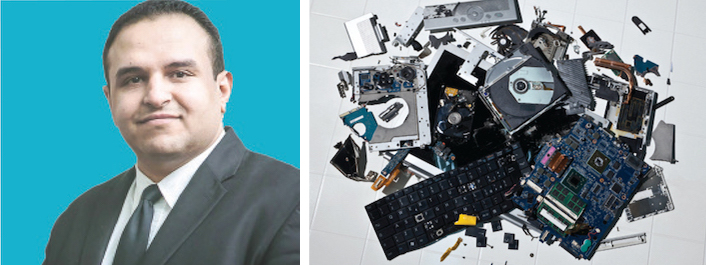3 Guiding Principles for Long-Lasting Wealth

A lot of tough lessons have been learned about building enduring affluence that can be shared in hopes of making others’ journeys more successful.
That’s why wealth management firm Balentine LLC’s CEO Adrian Cronje, a YPO member, partnered with chairman Robert Balentine to co-author the book First Generation Wealth: Three Guiding Principles for Long-Lasting Wealth and an Enduring Legacy. Over the years, they have worked with hundreds of entrepreneurs and family business owners to help them think about how they want to preserve and leave a legacy. They educate people on how to lay the groundwork for the successful transfer of wealth among generations.
Here’s an introduction to their three guiding principles for long-lasting wealth:
Don’t Mistake Wealth for Legacy
It takes more than money to shape and sustain a legacy. In fact, chasing wealth can become unhealthily all-consuming.
“There are so many unhappy wealthy entrepreneurs who arrived in the end zone and didn’t stop along the way and think of the soft stuff that really matters,” Cronje says. “It takes a hard look in the mirror as an entrepreneur to realize that your identity should be separated from your business. If money starts to define who you are, it becomes hard to live a fulfilled life.”
Cronje points to the metaphor in the book’s forward explained by friend and mentor Brian Dyson, former president and CEO of Coca-Cola Enterprises. Cronje summarizes, “Imagine life as a game juggling five balls in the air – work, family, friends, health, and spirit. Work is a rubber ball — if you drop it, it will bounce back. Entrepreneurs can always come back from mistakes. The others are breakable.”
Thus, building your legacy is also about cultivating relationships with family, friends, employees and clients, as well as making an impact by giving back to the community in a purposeful way.
Distinguish Between Your Business and the Business of Your Family
Entrepreneurs must perform a delicate balancing act between leading and managing a business and leading and managing a family — especially when the two are inextricably intertwined.
Simply put, what’s good for the family is not always good for the business and vice versa.
“A lot of families try to hide the wealth that they created from their children,” he notes. “That’s running away from the problem — and it doesn’t work in this information age.”
Coined the “shirtsleeves to shirtsleeves phenomenon,” this is the age-old concept expressed in countless cultures that says that wealth tends to decay with the third generation if you’re not careful.
“This is where families often fracture,” Cronje tells Real Leaders. “My own family has gone from shirtsleeves to shirtsleeves twice.”
Statistics show that about 70% of second generations and 90% of third generations squander their inheritance. It takes intention and effort to defy the odds and transfer wealth successfully.
See the World Through the Next Generation’s Eyes
It takes foresight, clear communication, and empathy to prepare the next generation to carry on the family legacy.
Cronje suggests engaging the next generation early, often, and on their terms about financial education and literacy around money. Not doing so can be detrimental.
“Often, wealth created by the first generation wealth creator becomes a burden and robs their children of confidence or ambition since they feel that they didn’t earn it,” Cronje explains. “It’s awful to see the next generation feel guilty about being a successful family.”
It’s key to create a space to talk with their children and listen with empathy about their fears around money, he said. Cronje’s successful clients share a legacy document with their children that contains well defined values and culture and approaches money with gratitude, philanthropic intent, and meaning.
Did you enjoy this story? Subscribe today and gain a strategic advantage from the emerging trends and best leadership practices found within Real Leaders magazine.





Responses